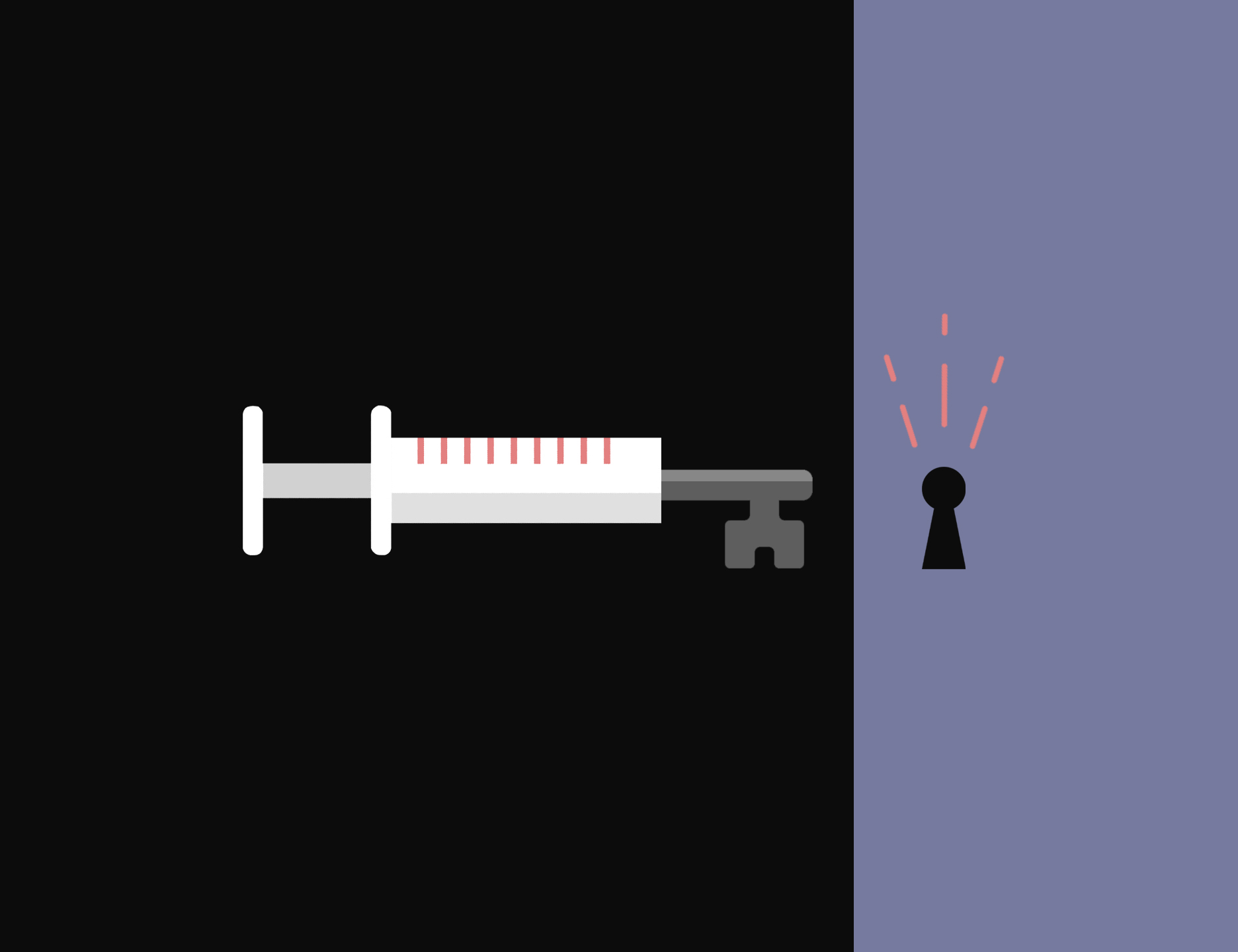Will COVID-19 wind up saving lives?
By spurring vaccine development, the pandemic is one crisis that hasn’t gone to waste


The light at the end of the tunnel is growing brighter.
Emergency-use approval for a third COVID-19 vaccine (from Johnson & Johnson) is now secured, and four million doses have immediately shipped. Over 200 million doses of the Pfizer-BioNTech and Moderna vaccines are expected by month-end, and 50 million doses of the AstraZeneca-Oxford vaccine (which is expected be approved next month) should follow by the end of April. The day when anyone can get a COVID vaccine is now within view. It's already time to start worrying about the next set of problems, from inadequate uptake by vaccine-resistant communities to ensuring poorer countries get adequate supplies of the vaccine, so that we can truly put this pandemic to an end.
Before doing that, it's worth pausing to recall once again how extraordinary it is that we have vaccines at all on this timetable. For all the manifest failures in both controlling the pandemic and in adapting to life under it — as well as the continued public health messaging failures that may be hampering the vaccine rollout and exacerbating inequities in distribution — the biomedical accomplishment that will make it possible to end the COVID emergency remains well-nigh miraculous.
The Week
Escape your echo chamber. Get the facts behind the news, plus analysis from multiple perspectives.

Sign up for The Week's Free Newsletters
From our morning news briefing to a weekly Good News Newsletter, get the best of The Week delivered directly to your inbox.
From our morning news briefing to a weekly Good News Newsletter, get the best of The Week delivered directly to your inbox.
So what would you say if I told you we could have gotten here years ago — and not just for COVID, but for myriad other killers?
There's a sense in which that statement is actually true. The revolutionary mRNA-based technology used by the Pfizer-BioNTech and Moderna vaccines (though not the one from Johnson & Johnson) is the fruit of decades of research and development. But already in 2013 a Novartis lab was able to assemble a vaccine against a novel virus using mRNA technology, and begin animal testing, all within a month of sequencing the virus itself. That's where things stopped, though. The next steps to develop and deploy the vaccine would have been vastly more expensive, and not primarily because of the lengthy testing and approval process. Entirely new manufacturing capacity would have had to be brought on line, for an entirely speculative product. Without a prospective revenue stream, there was little reason to invest billions of dollars on a blue-sky basis. Novartis sold its vaccine business in 2015.
COVID-19 itself was sequenced in January of 2020, and the initial vaccine candidates were developed within days of that event — much as in 2013. What changed was the enormous infusion of funding, which made it possible not only to develop the vaccines so fast, but to build out the manufacturing capacity necessary to deliver an entirely new type of vaccine for hundreds of millions and ultimately billions of people.
That's not the end of the story, though. The same and related technologies are now poised to deliver more wonders to fight many other diseases — some of which have been plaguing humanity for all of human history and doing far more harm than COVID ever will.
A free daily email with the biggest news stories of the day – and the best features from TheWeek.com
Take malaria, for example. It kills on the order of half a million people per year, most of them young children. The extremely negative effect of malaria on economic development has cost far more lives and immiserated entire populations. Malaria has been so harmful to human beings for so long that it has exerted measurable selection effects on the human genome. There's a reason why people who evaluate charitable giving based on cost per life saved rate anti-malaria efforts like distributing insecticide-laced bed nets as among the most effective philanthropic efforts in the world.
Malaria is an extraordinarily difficult pathogen to vaccinate against. But now, thanks to the fight against COVID — which advanced the technology, increased funding, and dramatically expanded manufacturing capacity — there are finally promising candidates being tested and, if effective, capable of being deployed.
Given that malaria has been around forever, why did it take COVID to spur this development? Part of the answer is that malaria largely afflicts poor countries in sub-Saharan Africa, while COVID has ravaged the developed world. But that's only part of the answer, because mRNA technology also has promising applications against cancer, a central health concern in developed countries with aging populations. Indeed, the search for cancer vaccines has been a major driver of research over the past decade.
Cancer, though, like malaria, is a longstanding, persistent killer that we have lived with and died from forever. It is not radically disruptive the way the pandemic has been. That widespread social and economic disruption is what prompted governments around the world to throw extraordinary resources into the development and manufacture of vaccines. The arrival of COVID was the public-health equivalent of war, and, much like a war effort, the fight against COVID has spurred the development of new technologies that will yield benefits far beyond that victory.
If we wanted to repeat that process, we'd need the public-health version of the moral equivalent of war — something that could create the necessary urgency in the absence of a crisis to tackle longstanding problems that, if they were novel, would prompt the kind of response we've seen to COVID. If the history of our metaphorical wars is any guide, though, there may be no such thing. There are always myriad problems competing for attention, making it impossible to focus urgently on all of them, and organizing against a clear and present danger is hard enough, as climate activists can readily attest.
But that doesn't mean we should despair. Rather, we should celebrate the fact that COVID is one crisis that hasn't gone to waste, focus on using the new tools we have developed for the benefit of all humanity, and continue to fund research that could put us in the best position to surge when the next crisis comes. Meanwhile, if, thanks to COVID, we are actually able to end malaria and other diseases that have plagued us for so long, then the pandemic may ultimately save far more lives than it ever took.
Noah Millman is a screenwriter and filmmaker, a political columnist and a critic. From 2012 through 2017 he was a senior editor and featured blogger at The American Conservative. His work has also appeared in The New York Times Book Review, Politico, USA Today, The New Republic, The Weekly Standard, Foreign Policy, Modern Age, First Things, and the Jewish Review of Books, among other publications. Noah lives in Brooklyn with his wife and son.
-
 Metaverse: Zuckerberg quits his virtual obsession
Metaverse: Zuckerberg quits his virtual obsessionFeature The tech mogul’s vision for virtual worlds inhabited by millions of users was clearly a flop
-
 Frank Gehry: the architect who made buildings flow like water
Frank Gehry: the architect who made buildings flow like waterFeature The revered building master died at the age of 96
-
 Is MAGA melting down?
Is MAGA melting down?Today's Big Question Candace Owens, Tucker Carlson, Laura Loomer and more are feuding
-
 Are zoos ethical?
Are zoos ethical?The Explainer Examining the pros and cons of supporting these controversial institutions
-
 Coronavirus vaccine guide: Everything you need to know so far
Coronavirus vaccine guide: Everything you need to know so farThe Explainer Effectiveness, doses, variants, and methods — explained
-
 The climate refugees are here. They're Americans.
The climate refugees are here. They're Americans.The Explainer Wildfires are forcing people from their homes in droves. Where will they go now?
-
 Coronavirus' looming psychological crisis
Coronavirus' looming psychological crisisThe Explainer On the coming epidemic of despair
-
 The growing crisis in cosmology
The growing crisis in cosmologyThe Explainer Unexplained discrepancies are appearing in measurements of how rapidly the universe is expanding
-
 What if the car of the future isn't a car at all?
What if the car of the future isn't a car at all?The Explainer The many problems with GM's Cruise autonomous vehicle announcement
-
 The threat of killer asteroids
The threat of killer asteroidsThe Explainer Everything you need to know about asteroids hitting Earth and wiping out humanity
-
 The scientific reason why everyone in the galaxy is obsessed with Baby Yoda
The scientific reason why everyone in the galaxy is obsessed with Baby YodaThe Explainer Even the Mandalorian can't resist the evolutionary power of cuteness
